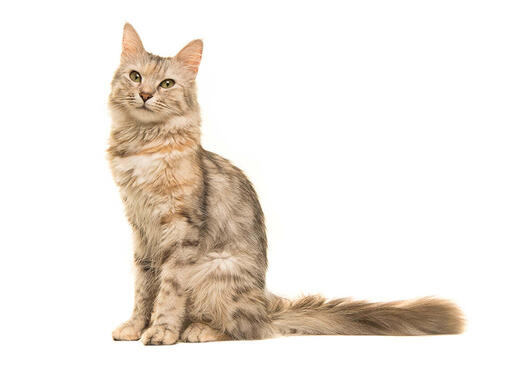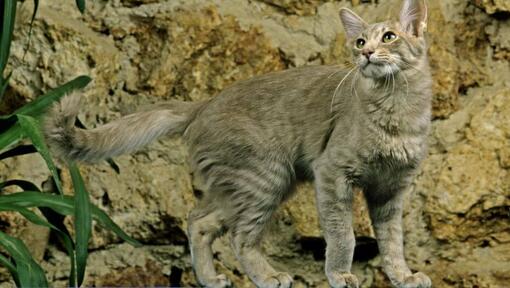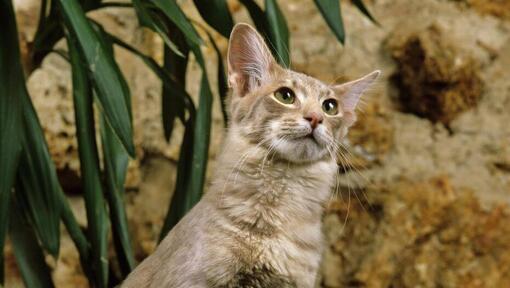- Meget aktiv og nyskjerrig katt
- Omgjengelig og sosial katt
- Meget snakkesalig katt
- Slank og elegant rase
- Krever daglig stell av pelsen
- Ikke allergivennlig rase
- Har bruk for noe utendørs plass
- Kan kreve tilvenning for å bo sammen med barn
Personality
Like all cats of Oriental type, these cats are lively and companionable. This breed is 'into everything' and always wants to know what's going on. Oriental Longhair cats are very talkative cats that can become bored easily and need plenty of attention for fun and games. These cats crave company, which is something to consider if you are out for most of the day – getting two litter mates may give them some company.
History and Origins
Country of Origin: England
Other Names: Foreign Longhair, Angora, Madarin, British Angora
Oriental Longhair cats were originally imported from Ankara in Turkey in the 19th century and were the first longhaired cats to be brought to Western Europe. The breed disappeared when the more fully coated Persian arrived in the early 1900s. The modern Oriental Longhair cat, has been genetically recreated by breeders in the UK through crosses with Abyssinian cats (for longhair gene) and Siamese cats (for body type). A few of the original cats were taken to the USA where they were bred and are now classified as Turkish Angoras. The Oriental Longhair cat breed was formerly known as the British Angora before being renamed in 2002 by British cat fancies in order to avoid confusion with the Turkish Angora cat breed. In Europe a solid coloured Oriental Longhair cat is known as a Javanese.
Although most Oriental Longhair cats live long and healthy lives, there are a number of disorders that seem to be associated with the Oriental family - those similar to the Siamese cat breed as they are closely related.
Every cat is unique and each has their own particular likes, dislikes, and needs when it comes to food. However, cats are carnivores and every cat must obtain 41 different and specific nutrients from their food. The proportion of these nutrients will vary depending on age, lifestyle and overall health, so it's not surprising that a growing, energetic kitten needs a different balance of nutrients in her diet than a less active senior cat. Other considerations to bear in mind are feeding the right quantity of food to maintain 'ideal body condition' in accordance with feeding guidelines and catering to individual preference regarding wet or dry food recipes.
Despite its long, silky coat, the fact that the Oriental Longhair cat lacks a woolly undercoat means that it needs less grooming than a Persian Longhair. Nonetheless, regular brushing to remove dead hairs is a good idea, and keeps the coat in tip top condition. As with all cats, Oriental Longhair cats benefit from regular vaccinations, parasite control and an annual veterinary health check.
While this breed is not widely recognised as one of the best breeds for children, all cats are different and with the proper familiarisation may still be able to live with children.



